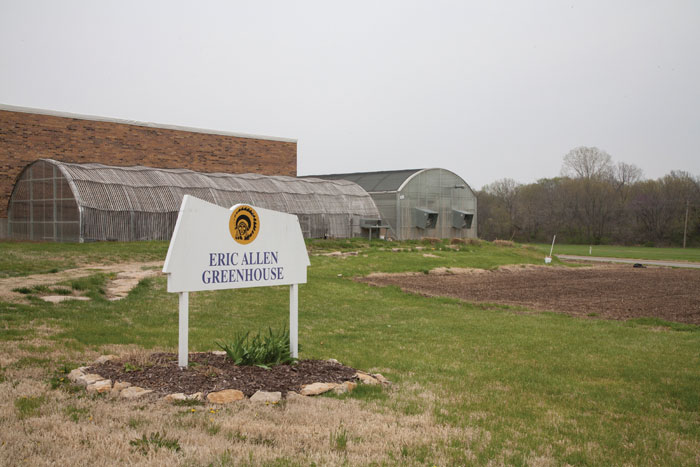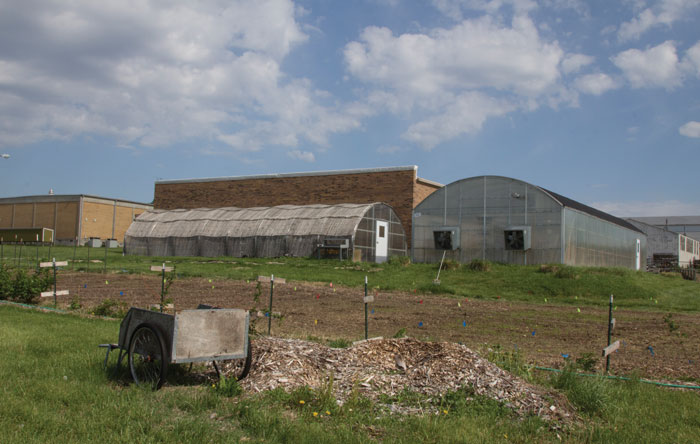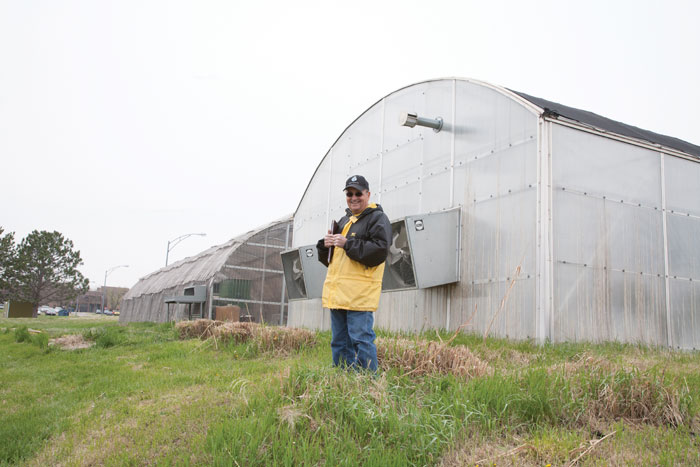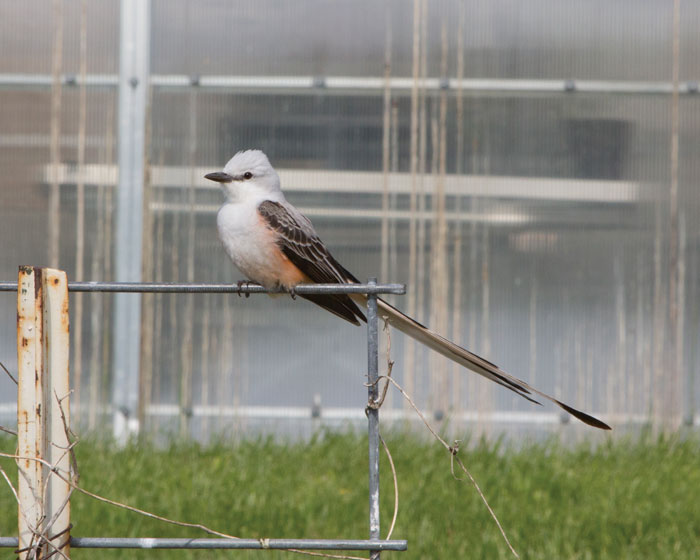IS GROWING NATIVE CULTURE & AGRICULTURE
| 2014 Q2 | story by DAISY WAKEFIELD | photos by STEVEN HERTZOG |

Haskell Garden & Greenhouse
Long before progressive foodies were talking about farm-to-table initiatives, or modern herbalists were touting plants as medicine, or environmentalists were proposing earth preservation, Native Americans were already doing these things. Concepts that have long been in the everyday lives and culture of American Indians, are also reflected on the campus of Haskell Indian Nations University.
On the southeast corner of Haskell sits a large greenhouse, surrounded by 2 large patches of roughed up dirt. One patch is the research garden, directed by Professor Bill Welton; the other is a student-led class lab garden, taught by Dr. Daniel Wildcat. While the two gardens have their distinct objectives, the underlying themes of both are the same: to cultivate and explore indigenous plants to the Native American community.
One of the initial catalysts for developing agricultural research at Haskell came as a result of a grant from the US Department of Defense to research switchgrass, a common prairie grass found on many native reservations. Heavy troop movement had eroded wide swaths of the tall grass on military encampments. Haskell was funded to research several of the more than 40 subspecies, from Oklahoma, Louisiana, and Kansas. The subspecies were analyzed for its ability to survive compaction and troop movement.
Switchgrass also has a practical application as a strong building material.

“Switchgrass is a major building component of the southern tribes,” says Welton. “Families within a tribal community would come together, bringing switchgrass for a barn raising type thing. It was a community affair.”
The military started taking advantage of switchgrass as a building material, using it to form building structures for mock combat uses. The switchgrass could be used in building two or three story high buildings.
Since the 1990’s, Haskell has also been receiving grants from the US Department of Agriculture. Initially directed toward water and soil conservation outreach among Native American reservations in Kansas, the grants’ purposes have migrated to a heavier research emphasis. Much of the research revolves around growing species of plants and vegetables that are indigenous to or benefit native tribes, honing in on which are the best species for growing in the particular climate and soils of Kansas.
Haskell’s research garden is also one of a dozen Master Gardner Program sites in Kansas that looks at hybrid and heirloom species. Haskell specifically collaborates with Kansas State University to grow various species of tomatoes, eggplants, peppers, and blackberries, recording and comparing weight, size, color, and taste.

Bill Welton
The research garden is also a laboratory for experiments with drip irrigation, natural pesticides, and composting. These issues are not confined to research or tribal lands, says Welton, but impact everyone.
“We are very concerned with drought and heat, and need to look at different methods of drip irrigation, if we’re expecting a tribe to grow a species, they have to be able to have a way to water. It’s a concern for everyone.”
The grants from the Department of Defense and the Department of Agriculture have totaled between $800-900K for Haskell’s research gardens.
The other garden plot is used by the Haskell class, “Growing Change in the 21st Century: Next Generation Responsibility, Food Sovereignty, Water and Climate Change.” Taught by Dr. Daniel Wildcat, the class is in its third year, and students lead the way in developing the plot, bringing their own tribal and traditional knowledge to the garden. The elective course draws students from a spectrum of academic fields – business, environmental science, education, among others. Many of them have the shared experience of seeing their father, mother, or grandmother in the garden. They’re interested in delving deeper into the culture and history of growing foods, and as the name of the class suggests, the germane issues that revolve around modern farming.
Another outlet for gardening is the newly established Haskell Gardening Club, started last semester. Six or seven students currently meet weekly just to plant and explore together, and to help out where they can in either garden plot. They may have taken the Growing Change class, or perhaps Welton’s Soils or Botany classes. But mostly they’re just interested in growing things.
Robbie Wood, from the Cherokee tribe, says, “I always gardened as a kid, growing squash or tomatoes, but now I’m taking new approaches as an adult. I’m growing corn, greens, and medicine plants like sage, tobacco, and beebalm. It’s a learning process.”
The produce that comes from the gardens is shared with faculty, students, and some nearby tribes. Several years ago when a Potawatomi tribe’s tomato plants were ravaged by deer, the bounty from the research garden spilled over to them.
Future plans for the garden include creating a medicinal garden around the cultural center.
Welton says, “We’re trying to obtain seeds with specific cultural identification sent in by tribal elders, ones that are not necessarily recognized by western science, but that are understood, appreciated, and recognized by the elders.”
As well, Haskell is collaborating with Kansas State, the University of Nebraska, and Iowa State to explore entrepreneurial initiatives that can weave gardening and agriculture into business enterprises.
“The whole issue has to do with sustainability,” says Welton. “Economic sustainability, as well as resource and language and cultural sustainability. That’s where we want to go.”

Scissor Tailed Fly Catcher

1 Comment
864133 857689hi and thanks regarding the certain post ive actually been searching regarding this kind of info online for sum time these days hence thanks a good deal 703372